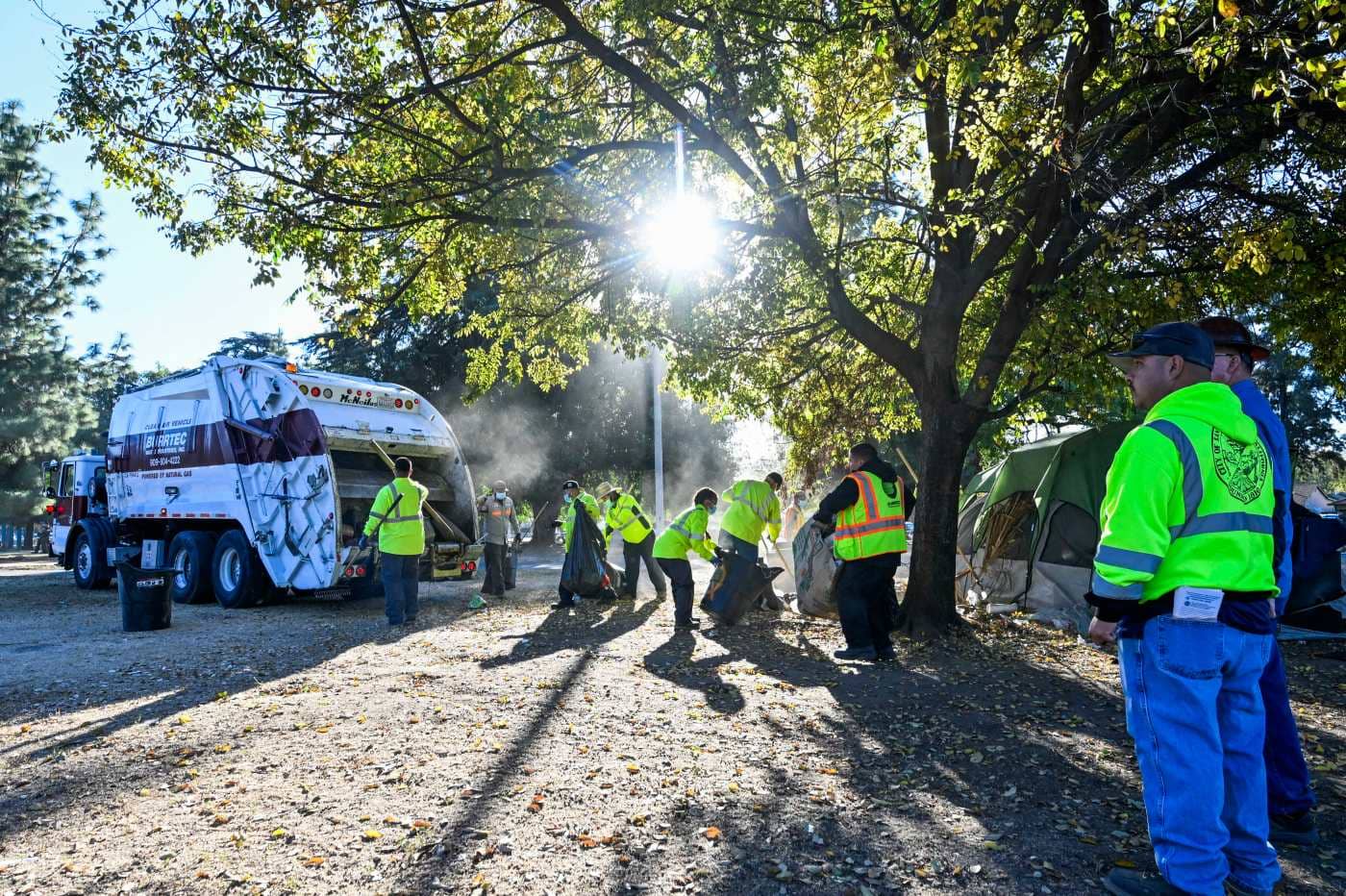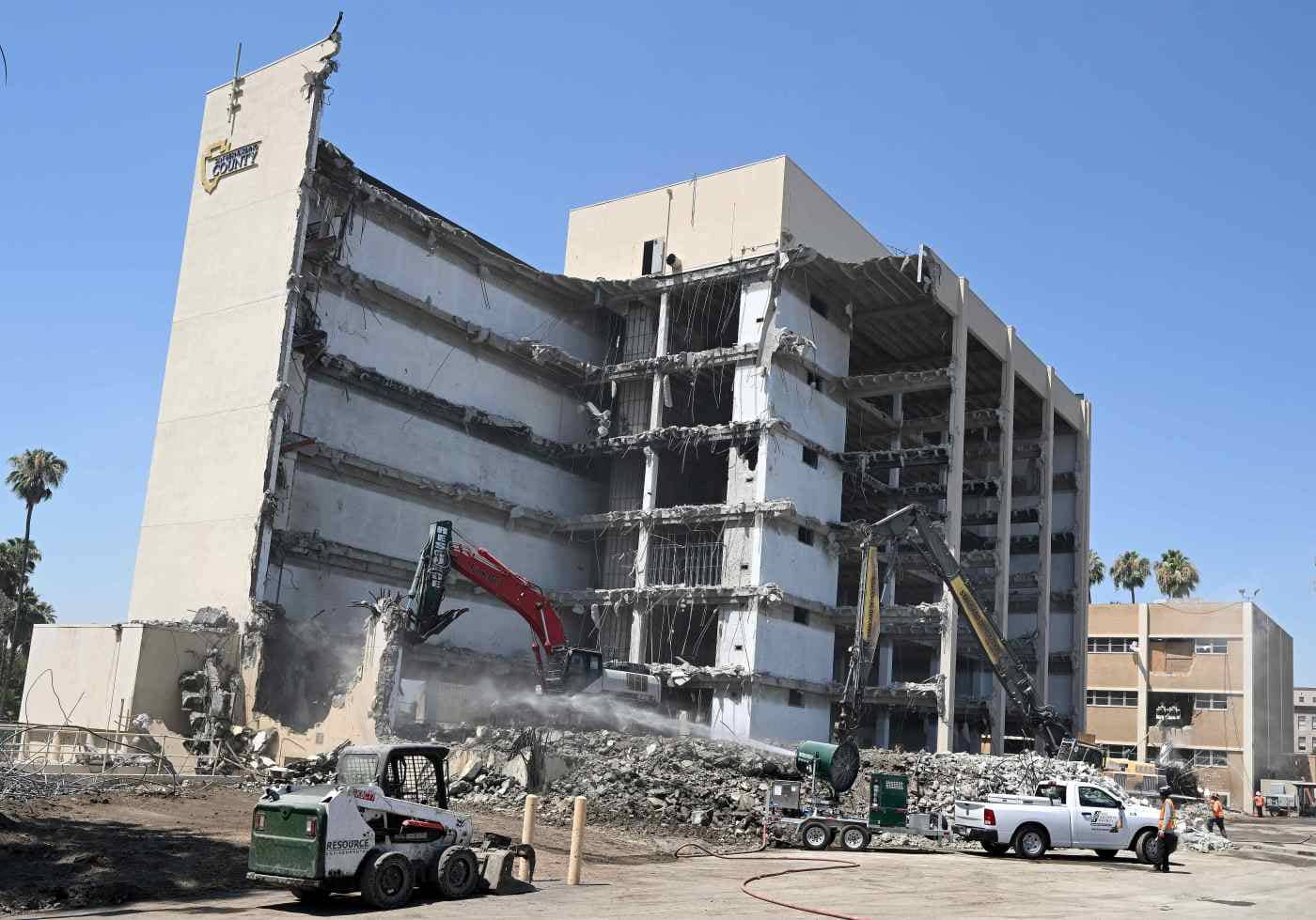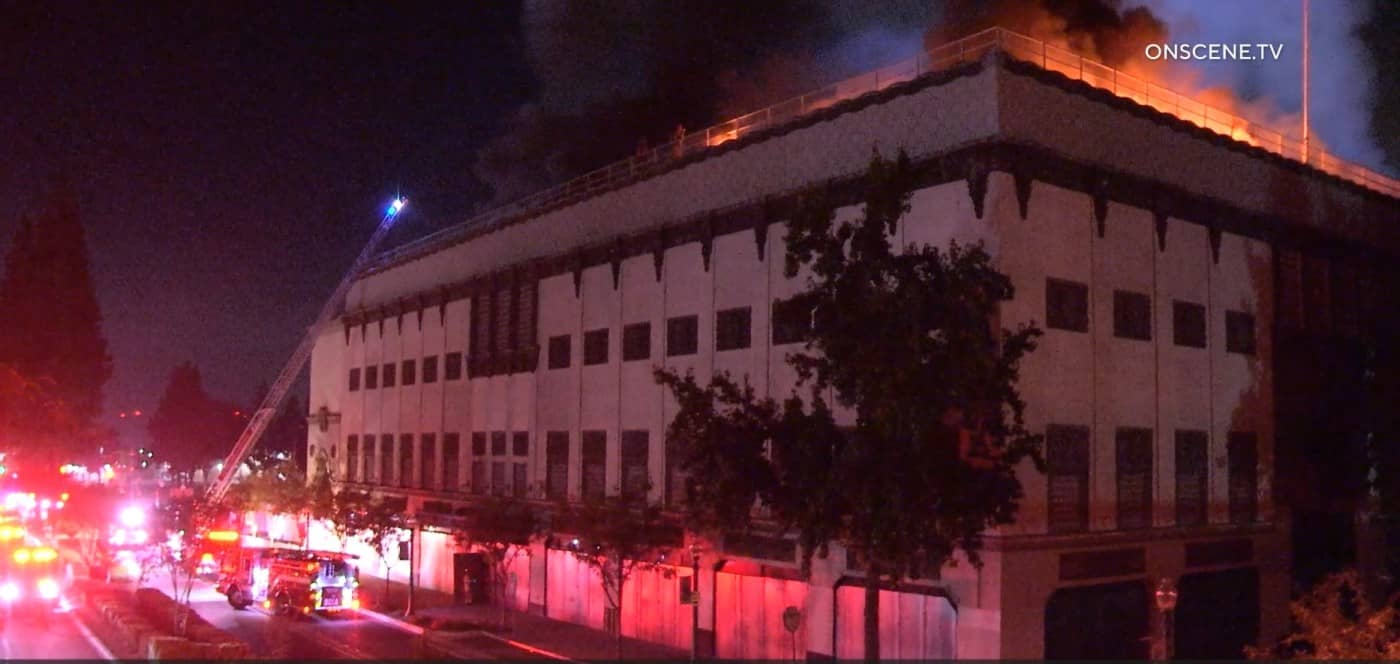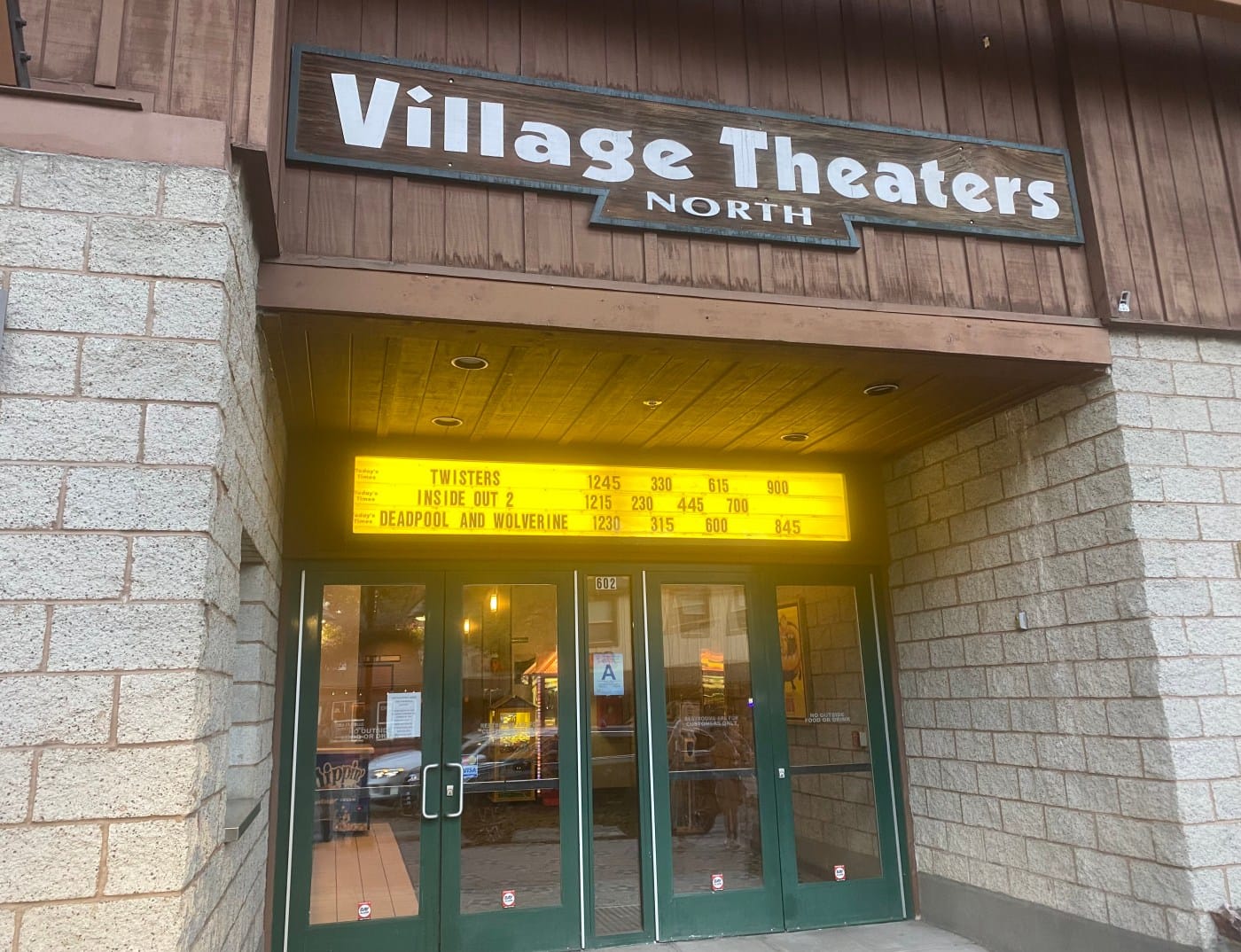Shortly after 7:30 a.m. Thursday, Nov. 14, homeless residents of San Bernardino’s Perris Hill Park woke to a rumbling trash truck and an army of police officers and city officials moving steadily through the park.
“This has been in the works for probably a month and a half now,” city spokesperson Jeff Kraus said Thursday morning over the sound of trash being compacted in the back of a white-and-maroon Burrtec trash truck.
“We have had homeless outreach people out here for almost two months and in the past month, it’s been on a daily basis, encouraging people to accept services, to find alternative living arrangements,” he said.
On Thursday morning, there were still dozens of tents in the 64-acre park when city employees arrived.
But there were “far fewer tents than we had a month ago, or even a week ago,” Kraus said, saying many park residents had “heeded our warnings” about the upcoming park cleanup.
“It’s an all-hands on deck attempt to both provide services and begin to restore the health and safety of Perris Hill Park,” Kraus said.
Bringing up the rear among city workers on Thursday were park staff, cleaning the grounds, laying down mulch and preparing to repair the sprinkler systems that Kraus said had been disabled by park residents.
“The park’s been occupied for almost nine months,” San Bernardino Police Chief Darren Goodman said Thursday morning. “It’s not safe, even for the people who are here. … There’s nothing compassionate about leaving people here in these conditions.”
Thursday’s sweep follows Gov. Gavin Newsom announcing in July that California cities had “no more excuses” when it comes to removing homelessness camps, after a June U.S. Supreme Court decision giving the green light to local governments to arrest people for sleeping in public, even when there are no shelter spaces available for them.
On Sept. 25, the ACLU Foundation of Southern California reached a “first-of-its-kind” settlement with the city. San Bernardino agreed to adopt a new policy preventing the destruction of homeless people’s property during encampment sweeps and ensure reasonable accommodations for homeless residents with disabilities. The city was previously barred from doing sweeps while the ACLU’s suit worked its way through the legal system.
Last month on Oct. 2, Mayor Helen Tran announced the city would begin clearing homeless encampments and open two new shelters.
By mid-morning Thursday, “about 30 folks” had been placed in various programs, Kraus said, including providing them with room and board, alcohol treatment programs and family reunification programs.
“Services for unhoused individuals range the gamut because of people’s circumstance,” Kraus said Thursday morning. “For some people, they have a family, and so they get put in one direction. We’ve got veterans, we have people who need rehab, people who need relocation. And some people just need a temporary place to stay.”
The city was providing emergency shelter for park residents for seven days, Kraus said. If park residents then participate in programs or services designed to help get them on their feet, their time in the shelter could be extended, he said. Priority for spots in three local motels was given to the estimated 200 people the city had documented living in the park over the past few weeks, officials said.
Goodman said no arrests would be made Thursday morning unless someone committed a crime unrelated to sleeping in the park.
Representatives of the ACLU were on hand Thursday, monitoring the clean-up and making sure the city complied with the terms of its settlement with the organization.
“People are not out here by choice,” said Kath Rogers, a staff attorney for the ACLU of Southern California. “It’s because the cost of living is way too high and they just can’t afford rent.”
Inland Empire apartment rents in March were 31% above where they were pre-pandemic, according to a Southern California News Group analysis.
“The big question is: Where are people supposed to go?” Rogers said.
Park resident Christian McGee, who said he’s lived in Perris Hill Park for about seven months, said he’s unclear how the housing vouchers offered by officials will translate into long-term solutions for himself and others.
“I go to work, I get off, I come here, I lay down, I go shower elsewhere,” said McGee, who said he’s lived in Perris Hill Park for about seven months, even as he works three part-time jobs. “I don’t think I’m causing any harm to the park.”
He understands the city wants the park to be a welcoming place for all residents.
“But if you really and truly wanted that, I feel you would offer us housing, which we’re actually needing,” McGee said.
He doesn’t have a plan for where he’ll be staying in the coming days, but said he has faith it’ll somehow work out.
The cleanup of Perris Hill Park and helping former residents get on a different path is not a one-day job, according to Goodman.
“A lot of the people who won’t get services, it’s because they’re not ready at this time, and we understand that. Not everyone’s going to make a decision to accept help at the same time,” he said.
According to San Bernardino County’s 2024 Point In Time Count in January, an estimated 3,055 county residents are living without permanent shelter, up from 2,321 in 2013. Using 2023 U.S. Census Bureau population estimates, that means about 122 of every 100,000 county residents do not have a consistent place to live. In the city of San Bernardino City, the annual homeless canvass found 1,417 residents without permanent shelter — that’s a homeless rate of 633 out of every 100,000 residents.
In comparison, about 149 out of every 100,000 Riverside County residents experience homelessness.
Statewide, an estimated 180,000 Californians experience homelessness every night, or about 455 people per 100,000 residents.
According to the U.S. Department of Housing and Urban Development, an estimated 653,100 people — or 195 people per 100,00 residents — were homeless in 2023. California is home to about 28% of all people experiencing homelessness in the U.S., according to HUD.
More on San Bernardino homelessness
- Why haven’t we solved homelessness in California?
- San Bernardino violated rights of homeless residents living in parks, lawsuit alleges
- Supreme Court allows cities to enforce bans on homeless people sleeping outside
- ‘No more excuses’ for cities, counties on homelessness, Gov. Newsom says
- Lawsuit settlement ensures protections for San Bernardino’s homeless community
- San Bernardino to clear out homeless encampments in parks, open new shelters
- California sends $34 million to Inland Empire to clear homeless encampments






















